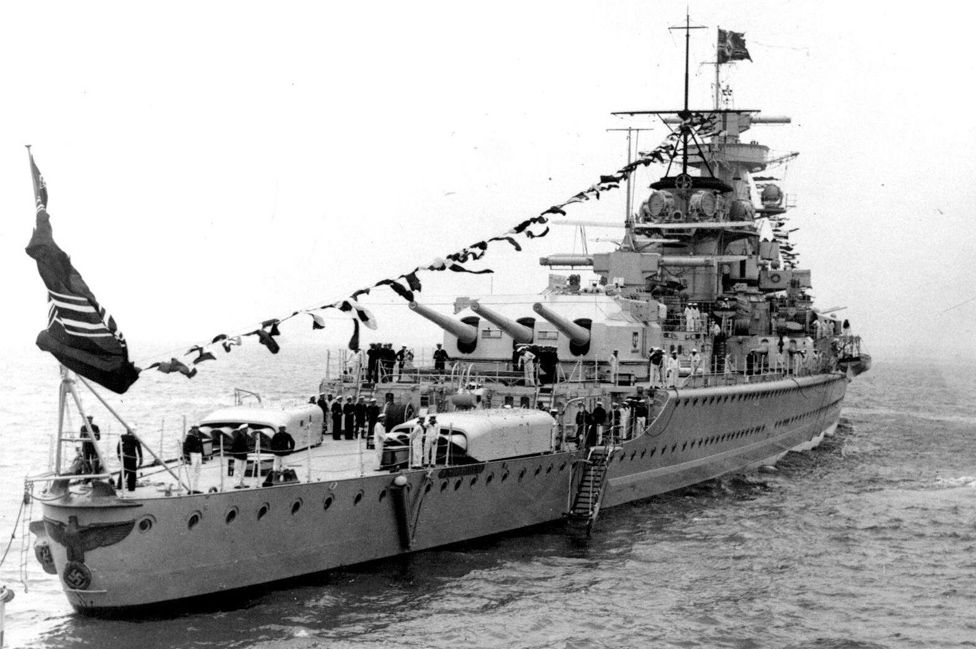The future of a bronze eagle which once adorned the Nazi-era battleship Admiral Graf Spee remains uncertain after plans to melt it down were scrapped.
Treasure hunters raised the eagle in 2006 off the coast of Uruguay, where the Graf Spee had been scuttled in 1939 to stop it falling into enemy hands.
A court ruled last year that it belonged to the Uruguayan state, in whose waters it was found.
The country’s president had proposed turning it into a sculpture of a dove.
President Luis Lacalle Pou had announced the plan to melt down the bronze eagle, which weighs 350kg (770 lb), on Friday.
The eagle, which has a wingspan of 2.8m (9.2ft) and is 2m high, clutches a large swastika.
It had been lying on the bottom of the River Plate since 1939, when the captain of the Admiral Graf Spee had scuttled it soon after the first major naval battle of World War Two. He feared the ship could reveal valuable German secrets if seized by the British.
It was part of the Deutschland class of heavy cruisers. Called Panzerschiffe, the vessels were nicknamed “pocket battleships” by the UK press at the time due to their heavy guns and low weight.
The Graf Spee had been a great threat to the Allied forces in WWII, having sunk eight merchant ships between the outbreak of war in September 1939 and its scuttling in December of that year.

“It occurred to us that this symbol of war could undergo a transformation into a symbol of peace or union, like a dove,” the president had said on Friday.
A Uruguayan sculptor, Pablo Atchugarry, had been commissioned to recast the eagle.
Mr Atchugarry accepted what he called the “challenge of transforming hate, war and destruction into a symbol of peace”.
But just two days later, President Lacalle Pou announced that the idea had been shelved.
“In the few hours that have passed [since the announcement], an overwhelming majority of people has come forward who don’t share the decision. When you aim for peace, the first thing you need to do is create unity and this [idea] clearly didn’t,” Mr Lacalle Pou said.
He did not say what would happen to the bronze now.
The fate of the eagle – whose ownership was the subject of a long legal battle – has been a matter of controversy since it was first raised from the river bed.
When it was briefly exhibited years ago, Germany complained, asking the Uruguayan state not to showcase “Nazi paraphernalia”.
When a court in Uruguay ruled that the eagle should be auctioned off to pay off the private investors who had financed its recovery from the River Plate, the Simon Wiesenthal Center, a Jewish human rights organisation dedicated to Holocaust research and remembrance, warned that it could fall into the hands of Nazi sympathisers.
While Uruguay’s Supreme Court ruled last year that the eagle belonged to the Uruguayan state, its government appears no closer to deciding what its fate should be.
Source : BBC
















